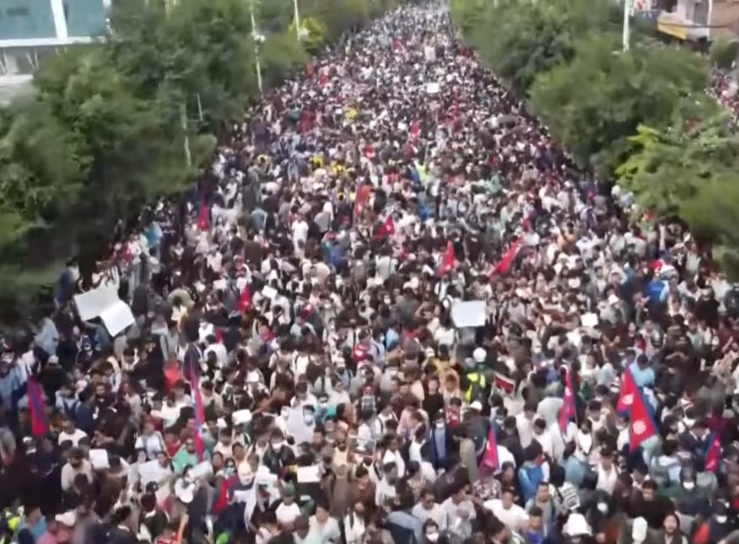
PIC Credit social media
“When the Fire Spreads: Nepal’s Youth Revolt Sparks Lessons for Autocrats”
“Gen-Z Roars, Authoritarianism Falters: Democracy Demands Space for Expression”
Spark to Inferno: Nepal’s Youth Uprising
Nepal’s recent upheaval, triggered by a government-imposed ban on 26 major social media platforms—including Facebook, WhatsApp, Instagram, and X—took the nation by storm. The action, intended to regulate misinformation through mandatory registration, ignited what’s now known as the “Gen-Z Protests.” Young Nepalis, state-wide, perceived the ban as an assault on free speech and democratic values.  
Violent clashes erupted as students and youth activists attempted to storm Parliament. Security forces responded with tear gas, rubber bullets, and even live fire, resulting in at least 19 deaths, hundreds injured, and injuries numbering well into the hundreds.   
Despite the unrest, protests intensified. Curfews failed to quell them. Homes of top leaders—including President Ram Chandra Paudel and Home Minister Ramesh Lekhak—were torched, and hundreds stormed the Prime Minister’s office.    
Pressure peaked when Prime Minister K.P. Sharma Oli resigned on September 9, 2025, signaling a collapse of authority under mass mobilization.    Reports even suggested he might flee to Dubai amid the turmoil. 
Truth vs. Suppression: Democracy’s Non-Negotiables
1. Silencing Social Media Invites a Backlash
Nepal illustrates a simple truth: when governments try to strangle digital platforms, they don’t suppress dissent—they amplify it. The virtual space may be intangible, but communities are mobilized—and swiftly. Across Sri Lanka and Bangladesh, similar attempts to control information led to national crises. In Nepal, the ban was an accelerant to public outrage.  
2. When Lies Write History, History Strikes Back
“Try to change history by writing lies, and history will erase you.” Authoritarian regimes often attempt to reshape narratives—but the Nepal protests show that truth, once blocked, finds a way to erupt. The public’s collective memory and outrage effectively rewrote the government’s fate.
3.Democracy’s Diverge with Force, But Align with Expression
The protests reflect the spirit of democratic giants—Gandhi, Nehru, Mahavira, Buddha—who championed truth and nonviolent resistance. In democratic systems, dissent and dialogue are fundamental. Suppression, however, breeds rebellion. Nepal’s uprising reiterates: When public expression is stifled, the streets become the stage—and dissent, the script.
Echoes from History: Authoritarian Compacts Fall Apart
•In Sri Lanka, protests over economic collapse and political mismanagement forced President Gotabaya Rajapaksa to flee in 2022, similarly sparked by public rage.
•In Bangladesh, crackdowns on media and political opposition often catalyze international outcry and domestic resistance.
Nepal now joins their company—where governance by repression fails, governance by voice prevails.
Autocrats, Take Note: Crucial Lessons
Lesson Insight
Digital suppression stokes dissent Attempting to control social media only sharpens outrage—especially among youth.
Narrative cannot be rewritten Fabricating or altering history often leads to erasure from it.
Democracy thrives on dissent Suppressing citizens leads to rebellion; enabling dialogue maintains legitimacy.
Youth are potent agents of change Gen-Z’s role in Nepal shows: dismiss them at your peril.
The Fire That Forged Change
“The dictator should be a little careful… because when a fire breaks out, it does not look at the position or status of the person living in the house.” In Nepal, that fire was Gen-Z’s thirst for expression and dignity—fanned by digital suppression, fanned again by violent response. When democracy’s channels are blocked, streets become the arteries of justice.
Nepal’s uprising is not just a moment—they’re a message. Autocratic regimes worldwide must heed it: Dissent is not disease. It’s democracy in motion.
Hasnain Naqvi is a former member of the history faculty at St. Xavier’s College, Mumbai


